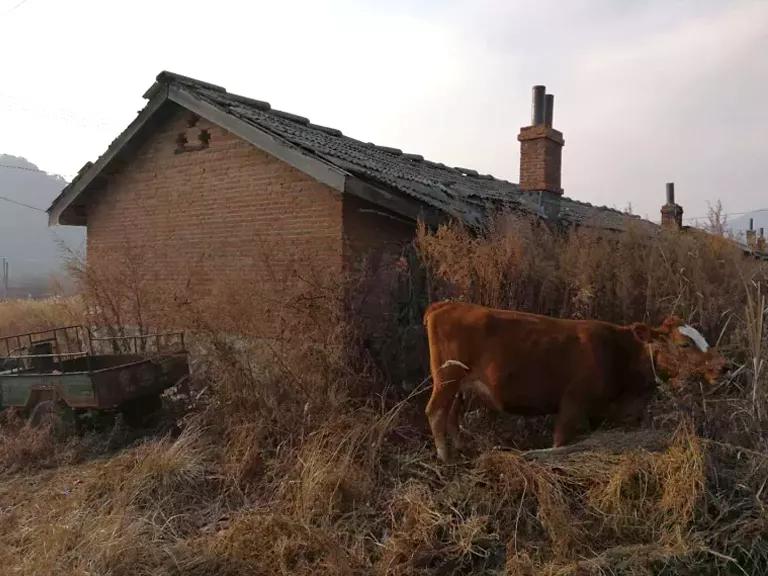
Photo of an Amur tiger taken by a field camera set by officials to monitor tiger and leopard presence in the Wangqing Nature Reserve.
Wangqing Tiger & Leopard National Park Bureau
“They’ve caught both tigers and leopards on this camera,” translated my NRDC colleague Lisa Hua, her eyes excited. She and I, along with our NRDC companions Susan Casey-Lefkowitz, Jingjing Qian, and Janet Fang, stood outside our vehicles along a jeep road in the forested Wangqing Nature Reserve in remote northeastern China, not far from the Russian and North Korean borders.
We listened as officials with China’s Wangqing Forestry Sub-Bureau explained that the field camera placed on the tree in front of us had caught images and even video of some of the region’s (and the world’s) last remaining wild Amur tigers and leopards roaming right where we were standing.
I looked around, wondering what it would be like to suddenly see a 600-pound tiger in this quiet, foggy, mountainous forest. Back home in Montana, I’d seen a mountain lion in the wild once, in the woods of the Swan Valley. Watching the big, powerful cat calmly watching me, unblinking, tail twitching, was thrilling, humbling and unnerving. Yet our mountain lions are kittens compared to the great Amur tigers of northeastern China and the Russian Far East, which can be six times larger and occasionally prey on Asian black bears and brown bears.
We were visiting the Reserve as part of a several-day trip to meet with state and local Chinese officials who are overseeing the development of a new Northeast Tiger and Leopard National Park. China recently announced that, for the first time, it would soon be developing a system of national parks throughout the country, including several dedicated to conserving imperiled iconic species like pandas, Tibetan antelopes, snow leopards, and Amur tigers and leopards.
NRDC is supporting the government as it thinks through how best to structure and administer this park system to “ensure harmony between human and nature,” as emphasized in the recent Chinese Communist Party’s Congress report. We will also be assisting with developing best practices for reducing human conflicts with the big Amur cats and establishing alternative, prosperous livelihoods for those living within the proposed park boundaries whose current occupations may conflict with the future park’s management and conservation goals.
The proposal to develop a new park is extremely exciting and much-needed good news for the struggling cats, whose populations are dangerously small. Only a few hundred Amur tigers (mostly in Russia, with less than 30 in China), and only a few dozen Amur leopards, remain in the wild. Creating the park will be a critically important first step toward protecting and recovering these felines and their habitat.
Yet, even if a park is created, significant challenges will remain. Unlike in national parks in the U.S., thousands of people will likely continue to live and work within the proposed Tiger and Leopard Park boundary. Some of them graze cattle, which can lead to depredations, especially by tigers. Some frequently hike into the forest to collect pine cones to sell the seeds, an activity that can also disturb both cat species. Some may set illegal snares to capture ungulates like sika deer and wild boar—thus reducing tigers’ and leopards’ natural prey.
These and other activities can lead to direct, and sometimes devastating, conflicts between people and cats. Though some or all of these activities will be prohibited once the park is created, as long as people remain within and near the park boundaries, so will the potential for conflicts, and thus potential obstacles to tiger and leopard recovery.
Fortunately, NRDC has a long track record of working with communities, conservation partners, and government agencies to help reduce human-wildlife conflicts. We’ve helped ranching communities hire range riders, installed fladry around calving pastures, built electric fences around bee yards, and helped finance fencing to keep wild bison from damaging homes, landscaping, and gardens. Our projects have prevented property damage, protected livestock, and helped make the landscape a more welcoming place for native wildlife.
We are thrilled by, and deeply committed to, the opportunity to work with China’s wildlife managers and park administrators to achieve the same results for local residents, their livestock and property, and tigers and leopards. Our greatest hope is that, one day, future tourists will travel to the area to experience for themselves the awesome presence of these magnificent carnivores—and learn about the creative coexistence measures that contributed to their return.






